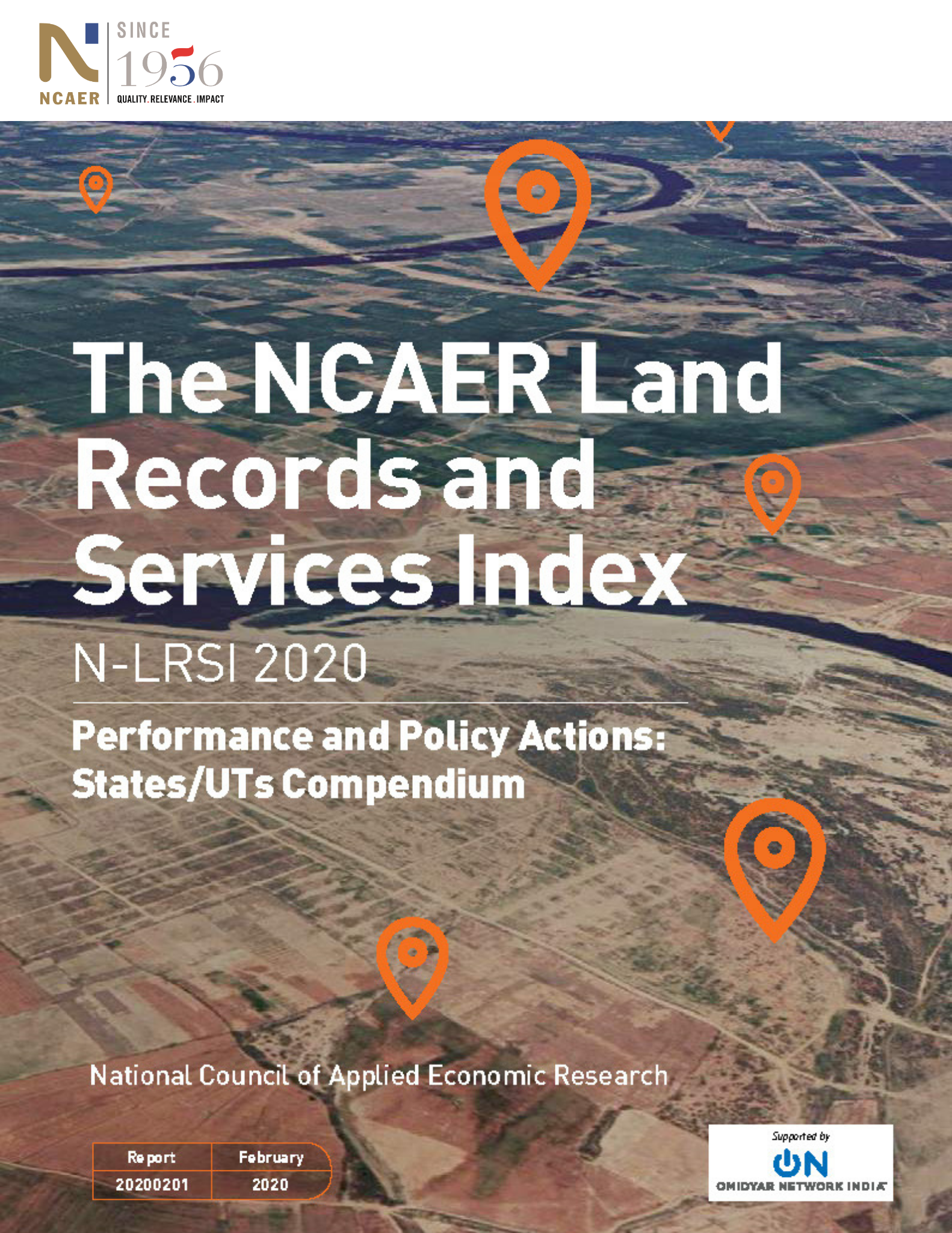NCAER’s new NCAER Land Records and Services Index (N-LRSI 2020), supported by Omidyar Network India assesses the extent of digitisation of land records and the quality of these land records in the States and UTs of India. Madhya Pradesh, Odisha, Maharashtra, Chhattisgarh, and Tamil Nadu emerged as the top States in the N-LRSI 2020. The first component, which aims to assess whether a state has made all its land records digitally available to citizens, looks at three dimensions—the text of the land records (also called the record of rights), the official map associated with a land record (also called cadastral maps), and the property registration process. The second component of the Index aims to assess if the land records are comprehensive and reliable–are ownership details updated as soon as a sale occurs, the extent of joint ownership, type of land use, land area on the record and on the map, and are encumbrances being recorded (other claims on the property such as mortgages and court cases). All these elements are closely connected to land disputes and to the ease with which transactions in land can be completed and legally recorded and then conveniently accessed. While for the textual record digitization, Dadra Nagar Haveli, Chhattisgarh and Goa appeared to be the leading states, Lakshadweep, Madhya Pradesh and Chhattisgarh topped the list for spatial record digitization. For the registration component, Maharashtra emerged as the leader, while Jharkhand, Odisha and Chhattisgarh were the front-runners on the quality of their land records. The findings of the index 2019-20 exercise is likely to enable states go make efforts in the direction of creating more comprehensive and accurate land record, by adopting the initiatives that successful states have made in this direction.
This document is the Performance and Policy Actions: States/UTs Compendium and the other related documents are:
NCAER Land Records and Services Index (N-LRSI) 2020
NCAER Land Records and Services Index (N-LRSI) 2020: Overview







